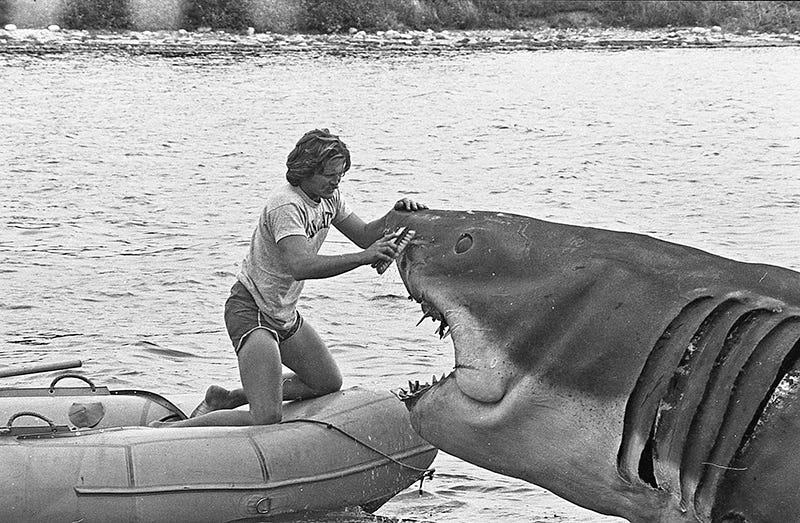So much of our early cultural context is decided for us. I was a young person living in Egypt when Jaws found me.
I had heard about the film; this was in the days when watching something meant committing to the search. You had to locate and purchase a physical copy, usually on VHS. There was a wait and travel time involved. If you didn’t live in the country of release, getting hold of a film was a small mission in itself.
So when Jaws finally showed up, it wasn’t just a screening, it was an event.
My school had an outdoor swimming pool with underwater speakers (I know - pretty cool). The pool was at the heart of our community. On special evenings, a makeshift screen was strung up, a projector wheeled out, and films would play as we splashed around, dividing our attentions between cooling off from the heat of the day and eyeballing the film between dives.
Until this film and that music started.
Two notes. And then chaos. Friends grabbing ankles. Sound vibrating through the water. Me, slipping beneath the surface to watch the screen ripple above the surface, suspended in a strange, liminal space between my world and the world of the film.
Watching Jaws while actually in the water is unforgettable. But more than that, it was formative. I didn’t just see that film, I lived it, and I have been processing it ever since.
For a generation of moviegoers, Jaws became a common reference point, a shared legacy carried and referenced for years. Thankfully, a film worth carrying. As educators, we often focus on the texts we choose to study, teach, and critique. Sometimes, though, it is the films that happened along in a singular moment that leave the deepest imprint.
This summer, as Jaws turns 50, I am thinking about the stories that found us when we weren’t expecting them, and how they’ve fundamentally shaped who we are all along.
For a great breakdown on the opening sequence of JAWS, read this article by the writer Cole Haddon.






